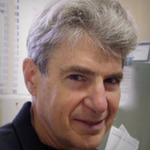Congratulations to the faculty members of the Biophysics Graduate Program who have recently been promoted!
To Emerita or Emeritus

Steven T. Ruggiero joined the Department of Physics in 1983. His collaborative research with Carol Tanner has used a new investigative tool, light transmission spectroscopy (LTS), to investigate the size distribution of particles within cells in order to uncover the governing principles that relate to their internal organization and their microscopic physical and emergent properties. This research also includes studies of the particle-size distributions of a number of biological systems such as proteins, bound protein pairs, liposomes, micelles, so-called nano-cages.

Carol E. Tanner joined the Department of Physics in 1990. Her collaborative research with Steven Ruggiero has used a new investigative tool, light transmission spectroscopy (LTS), to investigate the size distribution of particles within cells in order to uncover the governing principles that relate to their internal organization and their microscopic physical and emergent properties. This work also includes practical studies of cancer and normal cells, observations of differences in particle-size distributions, as well as the detection of environmental DNA, proteins, bacteria and viruses.
To Associate Professor with Tenure

Alan E. Lindsay joined the Department of Applied and Computational Mathematics and Statistics in 2013. His research seeks to understand how random processes allow social, chemical and biological systems to reliably communicate and function. To understand these stochastic phenomena, we are building mathematical models in the form of partial and stochastic differential equations. Using a combination of analytical and computational tools, we are using these models to show how randomness is a positive constructive force in biophysical processes. These results give fundamental insight into the feasibility and effectiveness of stochastic transport mechanisms.